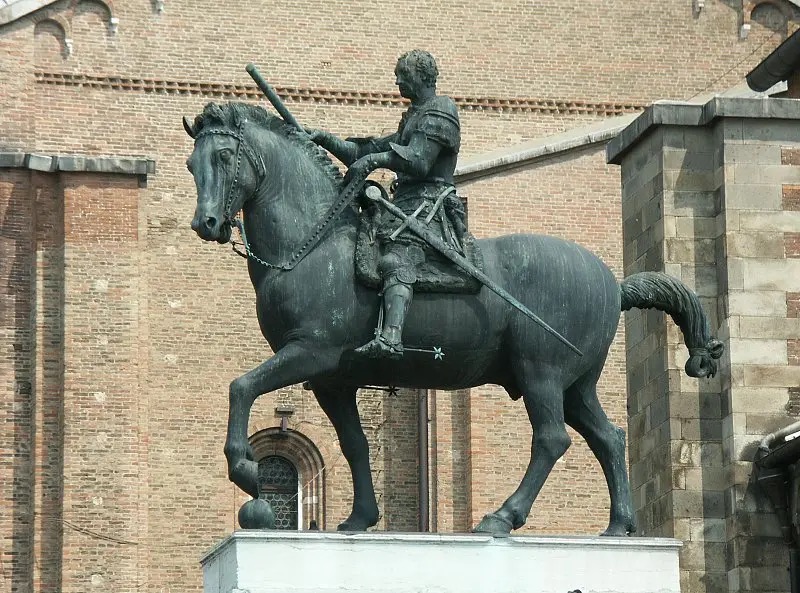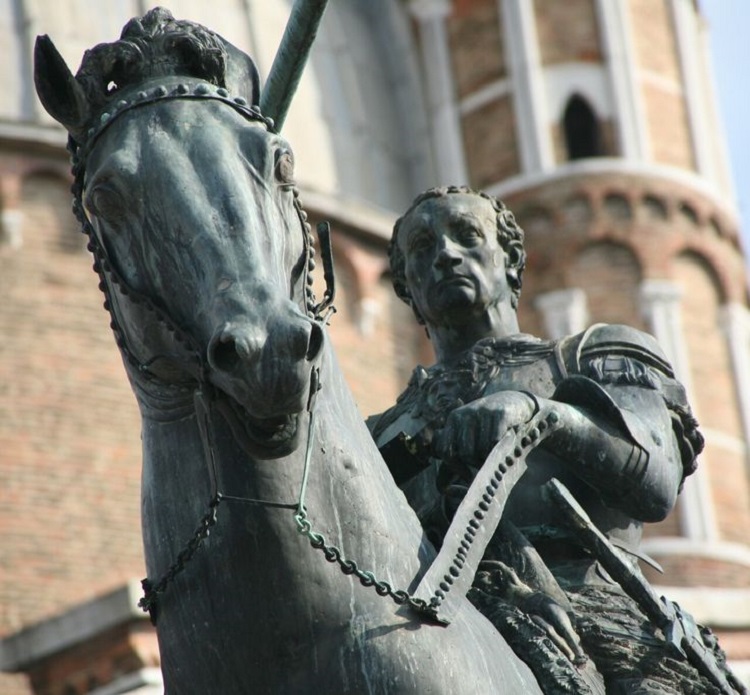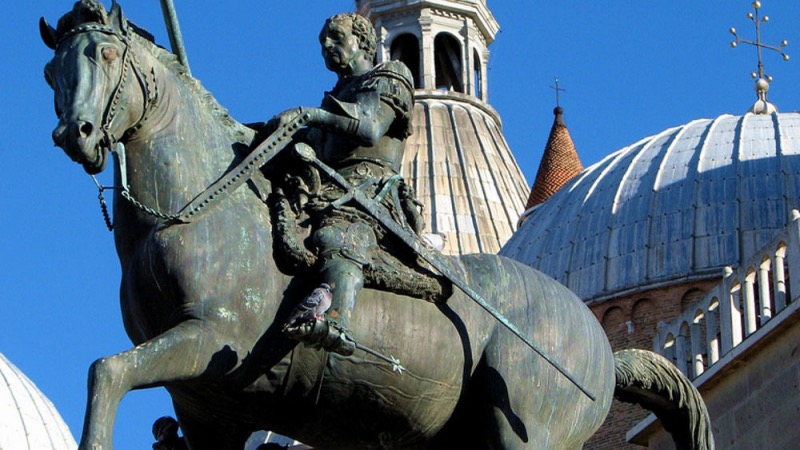
The equestrian monument dedicated to the condottiere Erasmo da Narni, called the Gattamelata, is the first to be executed since ancient Rome. Donatello, therefore, takes an ancient subject and brings it back into the Renaissance by renewing it.
In this post I describe Donatello’s Gattamelata and tell you why it is to be considered one of Donatello’s masterpieces.
DONATELLO’S GATTAMELATA

Donatello, Monumento equestre al Gattamelata, Padova
Donatello’s Gattamelata has a profile that seems to come straight out of an engraving or the relief of a commemorative medal. In reality, this was probably the intention of Donatello, who was a goldsmith by training and had certainly made many engravings similar to this one.
Donatello wanted to create a work that was in every way similar to a commemorative medal image, but of enormous size.
Gattamelata served first the Republic of Florence, then the Papal States and finally the Republic of Venice. He was a skilful military strategist and ended his life in the city of Padua, celebrated and honoured by the Venetian Republic.
THE IDEA FOR THE EQUESTRIAN STATUE OF GATTAMELATA IN PADUA
The inspiration for this work comes directly from the classical era. We know that Donatello had travelled to Rome, together with Filippo Brunelleschi, to study the works of Roman antiquity at close quarters and had therefore seen and observed the equestrian statues and many other classical sculptures. He had gone there at a time when Brunelleschi was in the process of designing the Dome of Santa Maria del Fiore and certainly, on that trip when they were both looking for inspiration, Donatello had seen the equestrian statue of Marcus Aurelius in the centre of the Piazza del Campidoglio in Rome.
The theme of the condottiero on horseback, typical of the equestrian monument, is taken up again in the Renaissance and is also present in two frescoes in the cathedral of Santa Maria del Fiore in Florence, painted by Paolo Uccello and Andrea del Castagno respectively.
It is likely that Donatello assisted in the creation of these two works, which followed the start of the construction of the Duomo dome in Florence and preceded Gattamelata, using them as a model. Thus, the equestrian monument in Padua can be considered a homage to Roman classicism but also a reference to the new Renaissance style that was transforming Italian cities in the 15th century.
GATTAMELATA ANALYSIS
Donatello’s Gattamelata, therefore, is a work of the Renaissance, but one inspired by the great condottieri of antiquity, and it is no coincidence that almost all reproductions and images of this equestrian sculpture capture the great condottiero from the side. Exactly as if it were a coin or an engraving.
Donatello’s Gattamelata stands in front of the Basilica del Santo in Padua. The movement of the horse’s head to the left is accompanied by the movement of the condottiero’s head turning in the same direction. It is a barely noticeable movement, but sufficient to give the impression of a deviation in direction.
The hero’s face is serious and concentrated and his lips are tightened as if he had just given an order. The expression is reminiscent of that of the great Roman emperors, and a winged head of Medusa is depicted on the armour, indicating how implacable the war action that the Venetian army, led by Erasmus of Narni, is about to carry out will be.
Not only is the leader inspired by the greats of the past, but also the horse seems to be a copy of one of the bronze horses in St. Mark’s Basilica in Venice, thus sealing the closeness between Padua and Venice and also the continuity of an ancient tradition on which the present now rides securely.

Gattamelata died in 1443 and Donatello was not in time to meet him. Therefore this equestrian monument is commemorative and the artist portrays the condottiero at the height of his strength, wishing to remember him as he advances towards a future of conquests.
Donatello’s equestrian statue still stands in the place for which the artist conceived it. It can be visited free of charge or admired simply by passing in front of the Basilica del Santo.

